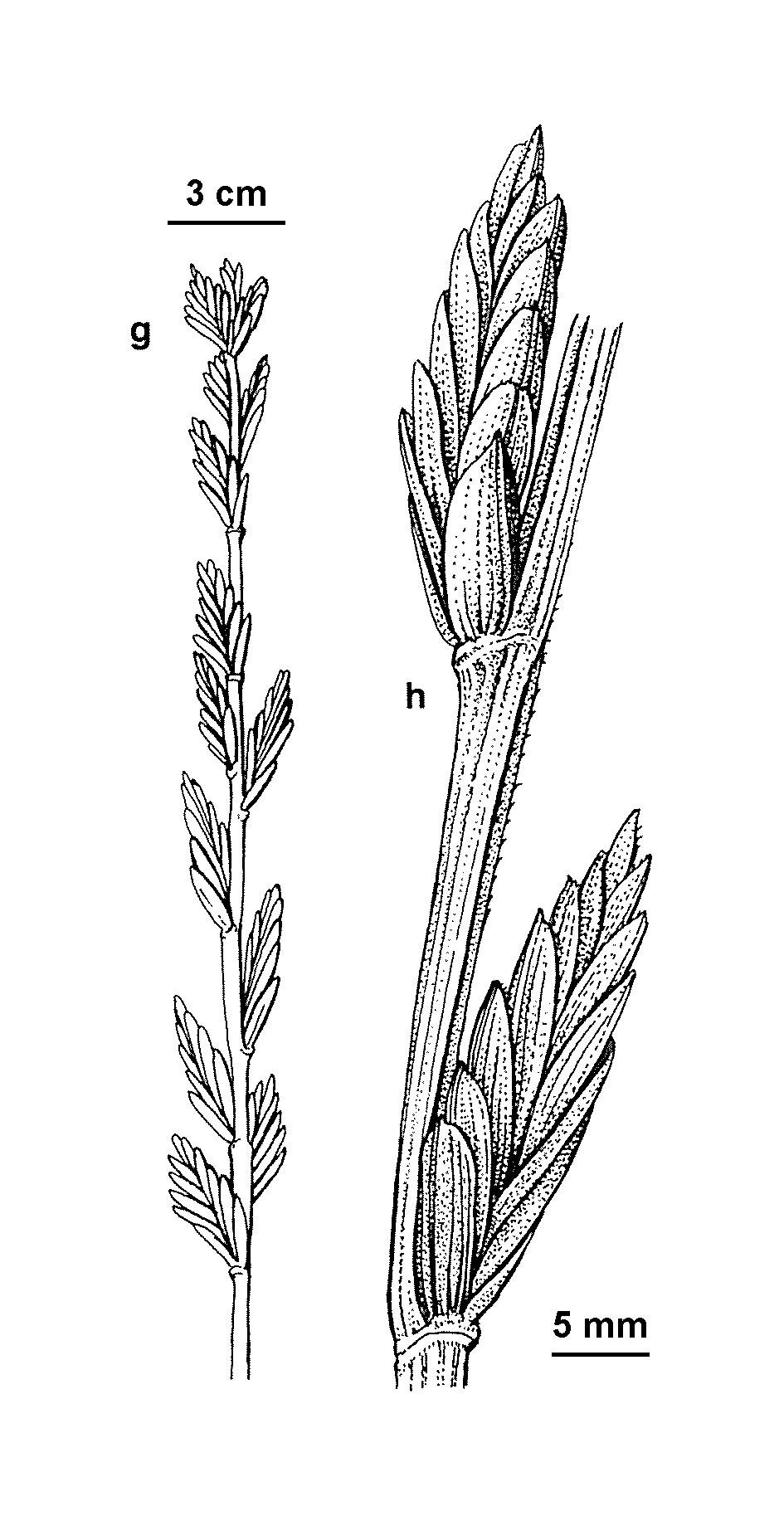Thinopyrum obtusiflorum
(DC.) Banfi Tall Wheat-grassRobust caespitose perennial. Culms erect, to 1 m high or more. Leaves prominently veined, glabrous or with scattered hairs; blades flat or loosely inrolled, sharp-pointed, to 50 cm long, 2–6 mm wide, scabrous toward the tip, otherwise smooth; ligule truncate, minutely ciliate, c. 0.5 mm long; auricles hardly developed. Inflorescence a distichous spike, 10–40 cm long; rachis spinose-ciliate along marginal angles, remaining intact at maturity. Spikelets 10–25 mm long, often curving away from the rachis in the upper part; glumes truncate, 7–11 mm long, the upper longer than the lower by up to 3 mm, both prominently 5–11-nerved, sometimes weakly scabrous along midrib; lemma obtuse or notched at apex, 9–13 mm long, c. 5-nerved, only the midrib prominent, glabrous except for finely ciliate margins; palea slightly shorter than lemma. Flowers Nov.–Mar.
MuM, Wim, GleP, VVP, VRiv, MuF, GipP, OtP, WaP, Gold, CVU, GGr, DunT, NIS, HSF. Also naturalised in WA, SA, NSW and Tas. Indigenous to southern and south-eastern Europe.
Planted as a crop mostly on heavier soils, sometimes prone to inundation or salination, but spreading from cultivation in many areas and now recognised as an aggressive invader of grasslands and wetlands.
The cultivar, 'Tyrell', is often selected for salted land.
It is sometimes treated as a subspecies of Thinopyrum elongatum. T. elongatum differs in having glabrous leaf sheaths, spikelets which are generally shorter in length, and are longer than lower inflorescence internodes, usually a shorter lemma, and longer cilia on the palea (Melderis 1985; Jarvie 1992; Assadi 1996; Cabi 2010). While both species can be decaploid (2n = 70), T. elongatum differs in also having ploidy levels of 2n = 14, 28, and 42 (Baker et al 2020).
 Spinning
Spinning